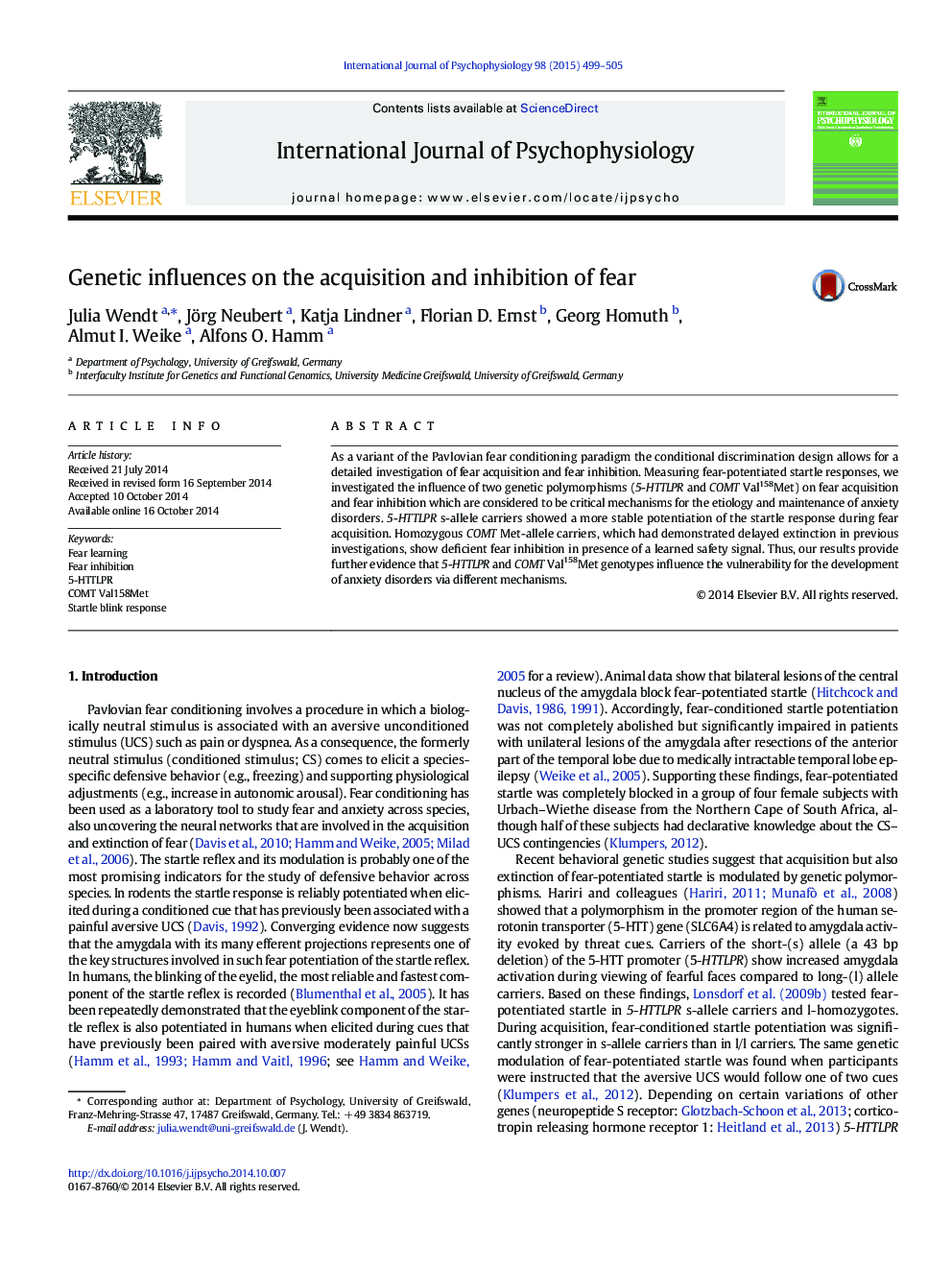| Article ID | Journal | Published Year | Pages | File Type |
|---|---|---|---|---|
| 930829 | International Journal of Psychophysiology | 2015 | 7 Pages |
•We examined effects of genetic factors on fear learning and fear inhibition in a conditional discrimination design.•The 5-HTTLPR polymorphism modulates the stability of fear expression during cues associated with aversive events.•The COMT Val158Met polymorphism modulates the inhibition of fear expression in the presence of a learned safety cue.
As a variant of the Pavlovian fear conditioning paradigm the conditional discrimination design allows for a detailed investigation of fear acquisition and fear inhibition. Measuring fear-potentiated startle responses, we investigated the influence of two genetic polymorphisms (5-HTTLPR and COMT Val158Met) on fear acquisition and fear inhibition which are considered to be critical mechanisms for the etiology and maintenance of anxiety disorders. 5-HTTLPR s-allele carriers showed a more stable potentiation of the startle response during fear acquisition. Homozygous COMT Met-allele carriers, which had demonstrated delayed extinction in previous investigations, show deficient fear inhibition in presence of a learned safety signal. Thus, our results provide further evidence that 5-HTTLPR and COMT Val158Met genotypes influence the vulnerability for the development of anxiety disorders via different mechanisms.
